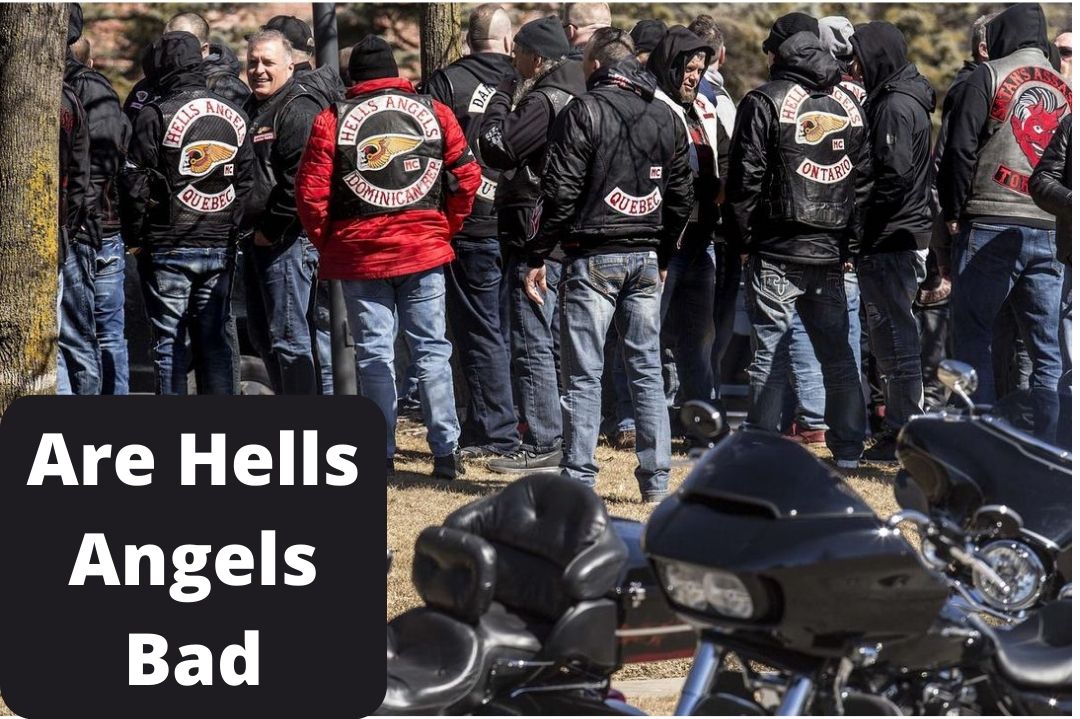Inside The Hells Angels: Myths, Realities, And The Truth

Table of Contents
The History and Origins of the Hells Angels
Early Years and Formation
The Hells Angels' story begins in the post-World War II era of California. Emerging from the burgeoning biker subculture of the time, the club's early years were characterized by a rebellious spirit and a rejection of mainstream society. The initial chapters, formed in the late 1940s, were far from the globally recognized organization they are today. Their early activities involved the typical pursuits of motorcycle enthusiasts: riding, socializing, and participating in motorcycle races.
- The club's initial biker subculture context was heavily influenced by the counter-culture movement.
- Early chapters, like the original one in San Bernardino, expanded to other parts of California, laying the foundation for their later territorial reach.
- Early legal conflicts and clashes with law enforcement were relatively minor compared to those that would come later, but they established a pattern of friction with authorities.
The Structure and Organization of the Hells Angels
Chapter System and Hierarchy
The Hells Angels operate through a complex chapter system. A mother chapter oversees numerous subordinate chapters across the globe, forming a hierarchical structure that ensures control and coordination. This structure allows for both localized autonomy and centralized decision-making.
Membership and Initiation
Becoming a member of the Hells Angels is not easy. The process involves a rigorous initiation, which often includes a probationary period and a demonstration of loyalty and commitment to the club. The significance of patches – the iconic insignia, such as the "Death Head" – is immense, serving as symbols of membership and marking the individual as part of the HAMC family.
- Ranks within the club, from prospects to full-fledged members and officers, each with specific responsibilities and power.
- The club's colors and insignia are deeply symbolic, representing identity and loyalty, contributing significantly to their powerful image.
- A strict code of conduct governs member behavior, emphasizing loyalty, secrecy, and adherence to the club's rules.
Hells Angels Activities: Myths vs. Reality
Criminal Activities and Allegations
The Hells Angels have been frequently implicated in criminal activities, including drug trafficking, violence, and extortion. However, it's crucial to emphasize that attributing all criminal activities to the entire organization is a dangerous oversimplification. While individual members may engage in illegal activities, proving direct involvement and official sanction by the club's leadership is often difficult. Many accusations rely on circumstantial evidence or the actions of individual members.
Legitimate Businesses and Activities
While primarily associated with criminal activities, some accounts suggest that certain chapters or individual members have attempted to establish legitimate businesses. However, verifying the extent and success of these ventures, and differentiating them from possible money laundering schemes, is extremely difficult, requiring extensive investigation.
- High-profile cases, such as the 1990s conflict with the Bandidos, illustrate the level of violence and organization, although they don't represent the full scope of HAMC activities.
- Differentiating between the actions of individual members and official club policy is a critical distinction frequently blurred in media reports.
- Reliable sources and verified information are crucial to avoid perpetuating unfounded rumors and generalizations.
The Hells Angels in Popular Culture and Media
Portrayals in Film and Television
The Hells Angels have been extensively portrayed in film and television, often depicted as violent criminals or ruthless outlaws. These representations, while sometimes entertaining, frequently rely on stereotypes and sensationalism, contributing to a skewed public perception.
The Impact of Media on Public Perception
Media portrayals, from Hollywood movies to news reports, have significantly shaped public perception of the Hells Angels. Sensationalized coverage often reinforces negative stereotypes and overlooks the complexities of the group’s internal dynamics and activities.
- Films like Easy Rider and Sons of Anarchy, while fictional, have solidified certain images of the outlaw biker lifestyle in the public consciousness.
- News coverage often focuses on criminal activities, ignoring potentially legitimate business ventures or any charitable activities, if they exist.
- Biased and one-sided portrayals foster inaccurate generalizations and prevent a more complete understanding of the Hells Angels' reality.
Conclusion
Understanding the Hells Angels requires a nuanced approach. Their history is complex, their structure is hierarchical, and their activities range from alleged criminal enterprises to, potentially, legitimate business ventures (though the latter requires extensive verification). The media's portrayal significantly influences public perception, often exaggerating the negative aspects and obscuring the intricacies of the club's reality. Delve deeper into the history and realities of this iconic motorcycle club to form your own informed opinion. Continue your research and learn more about the Hells Angels, using reputable sources and critically examining media portrayals to construct a comprehensive and accurate understanding.

Featured Posts
-
 Paris Roubaix Bottle Throwing Incident Spectator Surrenders To Police
May 26, 2025
Paris Roubaix Bottle Throwing Incident Spectator Surrenders To Police
May 26, 2025 -
 Understanding Pogacars Strava Upload Tour Of Flanders 2024
May 26, 2025
Understanding Pogacars Strava Upload Tour Of Flanders 2024
May 26, 2025 -
 Problemes Techniques Aux Studios De La Rtbf Analyse Et Solutions
May 26, 2025
Problemes Techniques Aux Studios De La Rtbf Analyse Et Solutions
May 26, 2025 -
 Hsv Im Hoehenflug Aufstieg In Die Bundesliga Perfekt
May 26, 2025
Hsv Im Hoehenflug Aufstieg In Die Bundesliga Perfekt
May 26, 2025 -
 Rangers Shakeup A New Era In New York
May 26, 2025
Rangers Shakeup A New Era In New York
May 26, 2025
